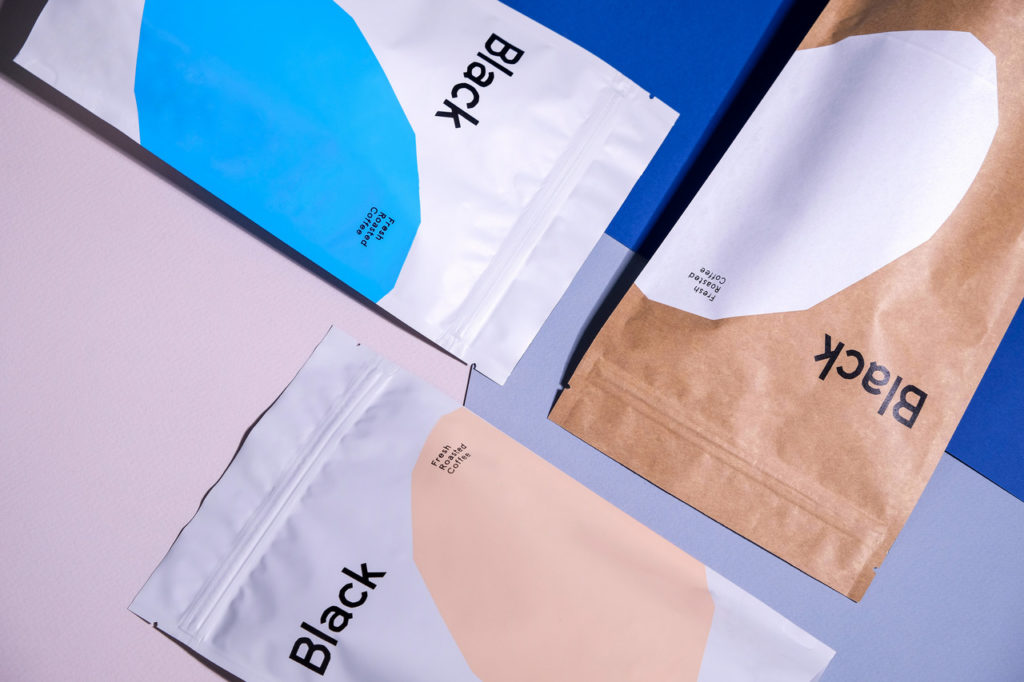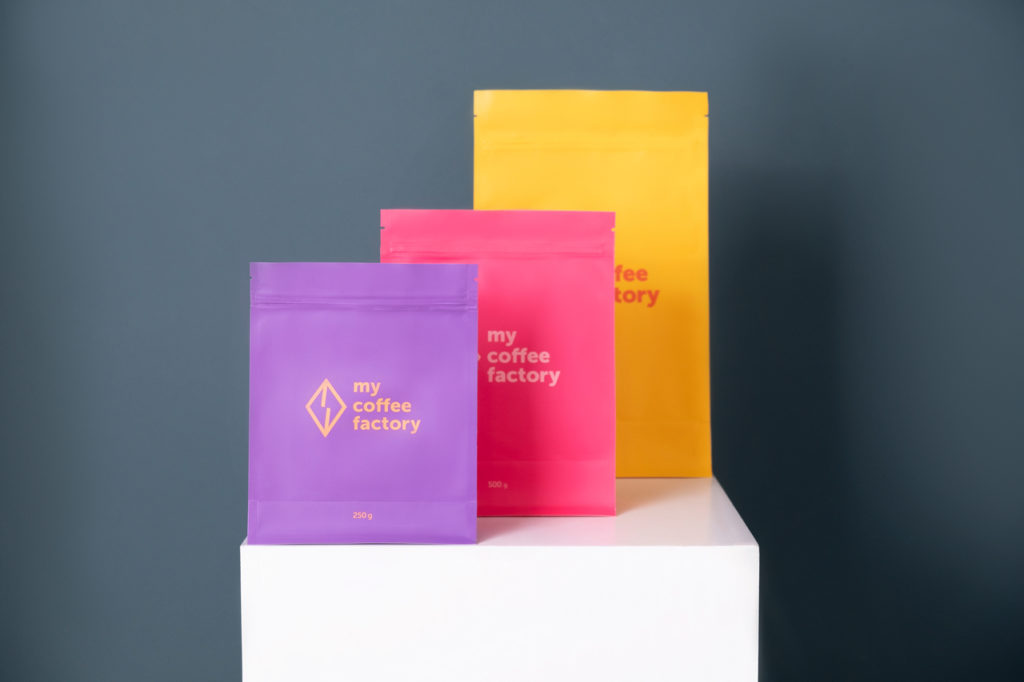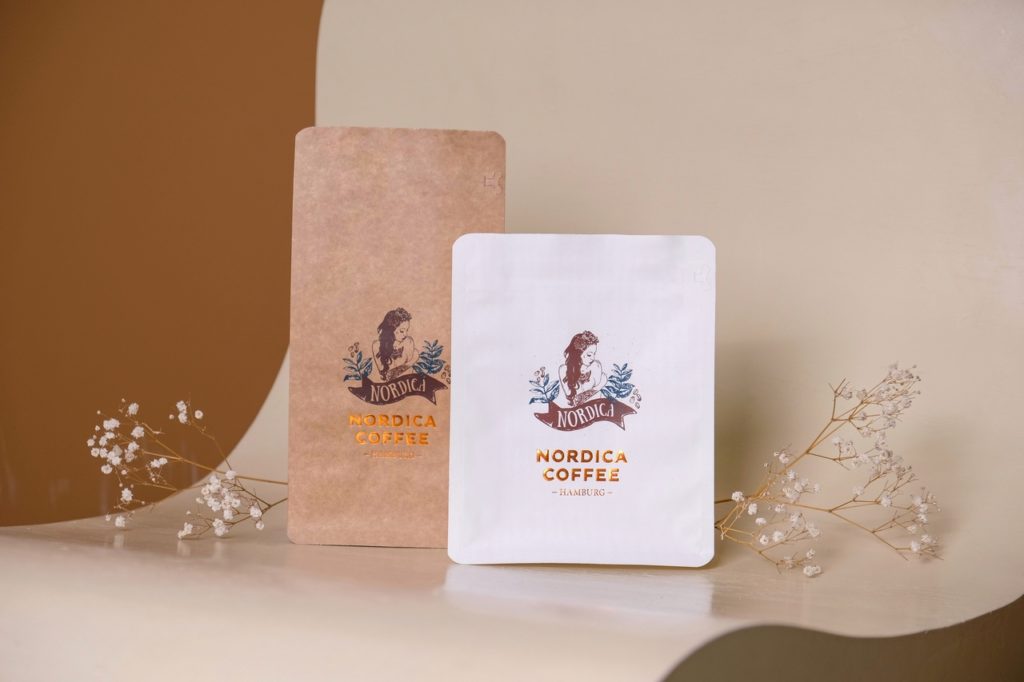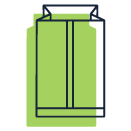Coffee Packaging
Coffee has always been more about culture than about a drink. Third-wave coffee shops are changing this culture — along with its packaging. Contemporary coffee packaging should reflect thorough selection of beans, quality roasting and rich taste — everything showing the manufacturer’s uniqueness. It should also match minimalistic interiors of coffee shops and their guests’ tastes.
Accordingly, we focus on each coffee project individuality — and provide a variety of options to customize packaging that will make your coffee beans stand out of the competition.
Global trends in coffee packaging
Personalization
Personalization encourages manufacturers to pay more attention to design. It has formally allowed extraordinary combinations of colors, transparent windows or whole walls, foil stamping for metallic luster, the mix of matte and gloss etc. Its most common manifestation is to order small batches of coffee roaster branded packages. Or to leave space on the package, where the barista will write the type of grinding, the variety of coffee and the customer’s name.
Small lots
Small lots imply that coffee specialty culture advances fine differences between coffee lots of the same variety from the same supplier. The roasters focus of the flavor profiles of certain lots, which bring their product more individuality. For coffee micro-lots small packages are becoming increasingly popular — 100 or 200 grams.
Tactile surface effects
Tactile surface effects mean all five senses should be involved in playing for coffee. In order to make packaging not only visually attractive, but also pleasant to touch, we use soft touch paper coating. They make surface feel furry and warm.
No metallization layer
No metallization layer is a way of making packaging more environmentally friendly, since this bag production process generates less CO2. The metallized barrier layer is added to keep coffee taste and aroma. Therefore, it is still necessary for the product, sold in retail chains with shelf lives of a year. However, craft coffee manufacturers that make products with a 1-2 months shelf life do not need foil inside.
Minimalism
Minimalism promotes laconic and stylish packages. Following this trend, producers avoid excessive details in their design, but they are more careful in selecting colors and appealing to consumers with unusual solutions, associated with their products.
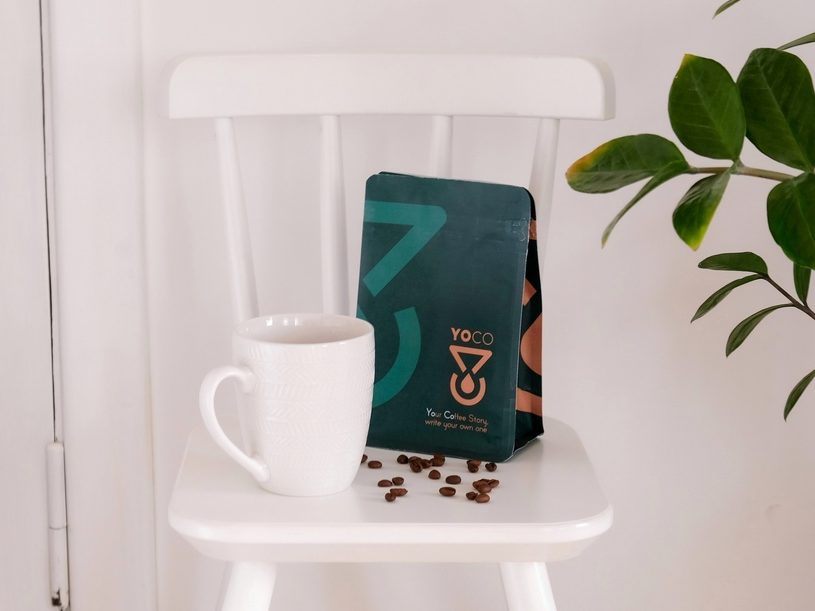
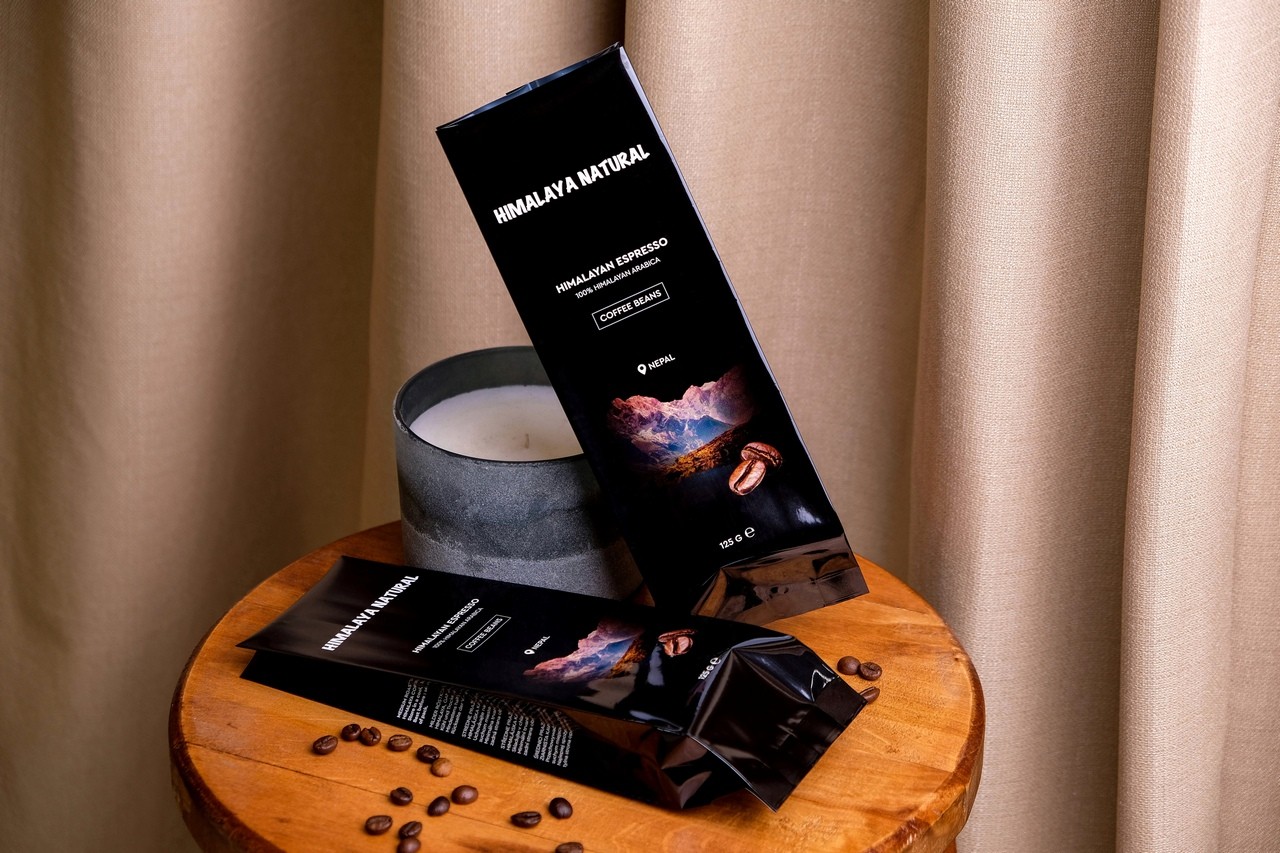
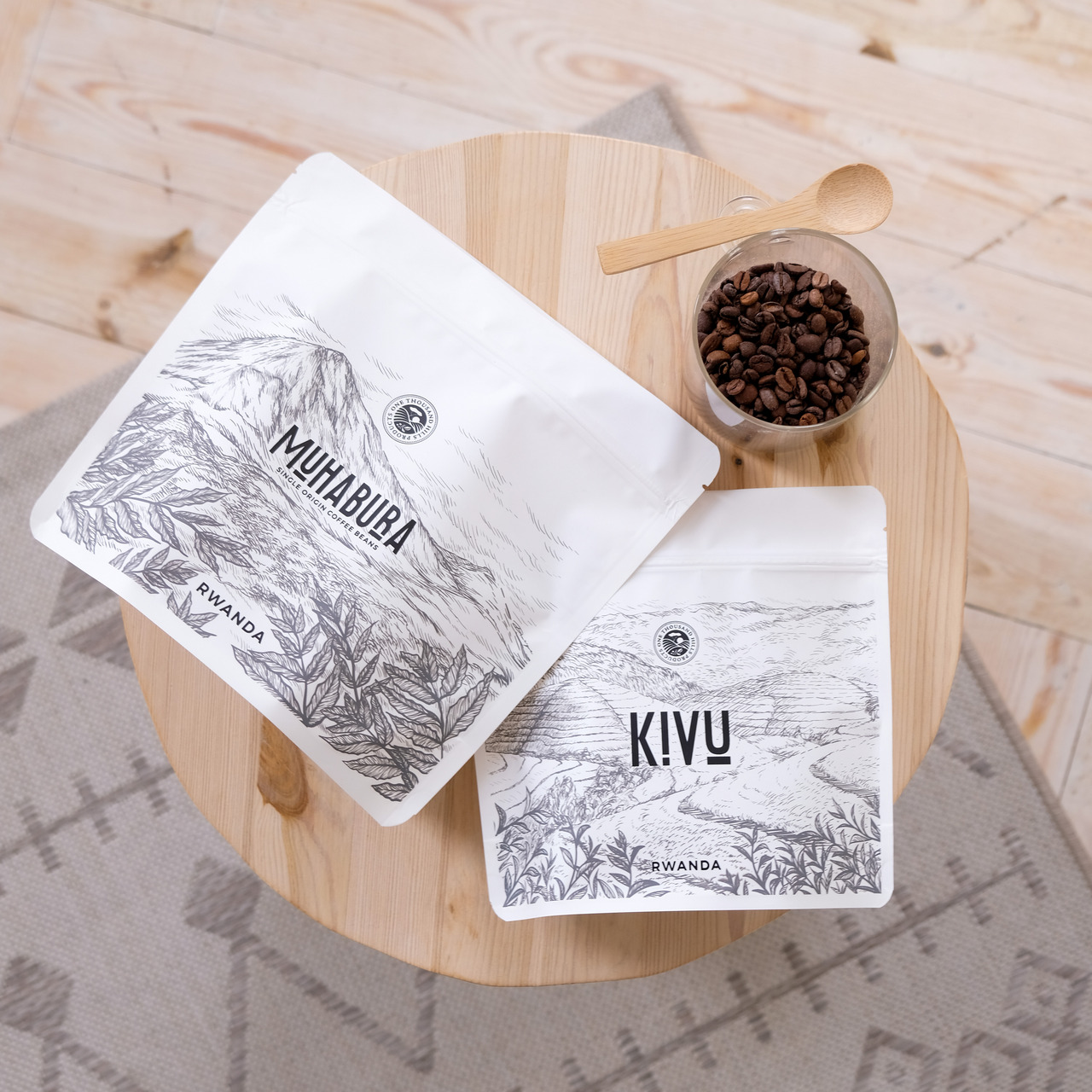
Our types of packaging
Our product range includes all the popular models of coffee packages — both for home use and coffee shops. The most common package sizes are: 100, 200, 500 and 1000 grams.
Flat bottom bags are stable and most popular coffee bags. They keep their shape even when the contents are light, and stand vertical on the shelf.
Doypack has a flexible bottom pocket that opens and makes the bag stable under the weight of the product. Trendy coffee doypacks are wide.
Gusset pouches with a center seal and side inserts may contain a lot of product. They are often used for coffee shops and other HoReCa establishments.
Stabilos are quad-sealed bags that enable to combine four different materials within the same model. Stabilo bottom becomes stable and square under the weight of the product.
Production and materials
Packaging is usually made of the multilayered material, where several layers of films with different properties are laminated. Coffee bags normally consist of three layers:
- The top layer is responsible for the attractiveness to consumers. It is branded, covered with designs and coatings. All the designers’ solutions refer to this layer.
- The barrier protects beans from oxygen and ultraviolet impact. That way, coffee stays fresh for a long time.
- The inner or insulation layer. It is necessary for good sealing during the production process.
Materials may vary depending on project features. The most flexible layer is the top one — for example, it can be made of kraft paper to emphasize product natural origin.
The barrier layer may also vary.
The mass market manufacturers make it of foil so that coffee can stay fresh in retail outlets for up to one year. For craft producers other, non-metallized materials are applied.

Extras in packaging
During the production we can add various technological options to packaging. Some of them are necessary while others serve as a pleasant bonus to consumers.
Degassing valve is always added to freshly-roasted coffee bags. For several days after roasting, beans release carbon dioxide. Thus, if they are sealed, packaging may explode. The valve lets excessive gas escape without letting oxygen inside, therefore, beans stay fresh.
The valve also serves as a marketing tool, since it allows buyers to feel the aroma, which encourages consumers to make a purchase.
Zip locks make coffee storage convenient. It is easy to open and seal packaging every time after use.
Transparent windows enable to see beans and visually ensure their quality. We can make individual elements or whole package walls transparent.
It is possible to customize doypack shapes. For instance, they may be made in the shape of a cup or Chemex.
Tactile coatings include kraft paper, soft touch coating, and paper coatings of various colors. They encourage consumers to hold packaging in their hands and complement their experience of interacting with coffee.
Design capabilities
It is hard to draw attention on a competitive market, so branding plays an important role in this respect. We use several different printing technologies, which enable us to apply quality images on packages.
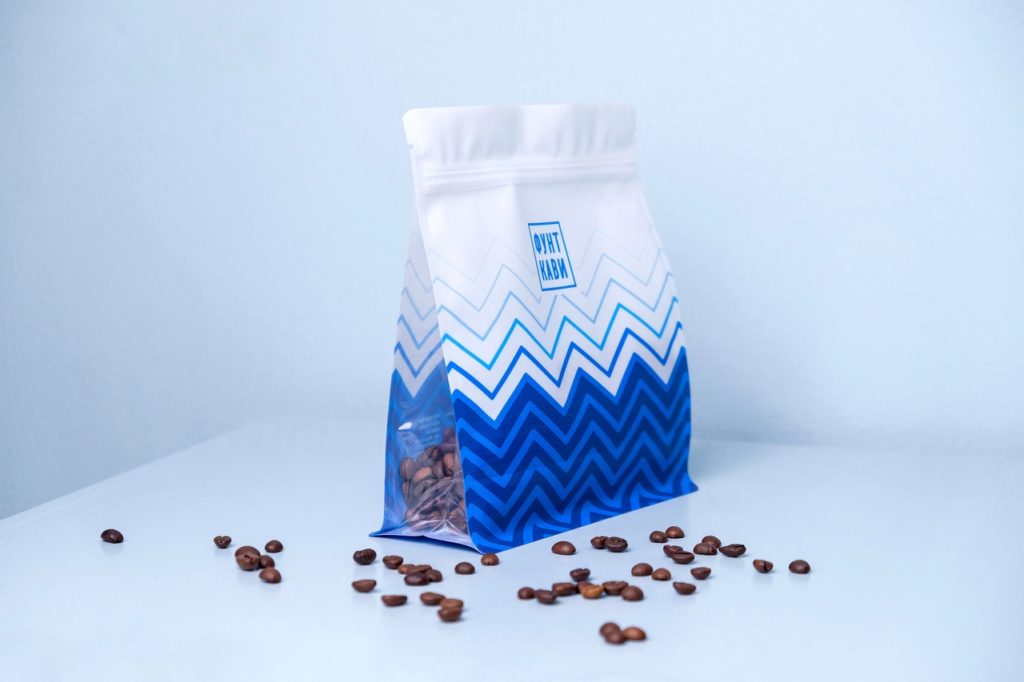
For large orders full color rotogravure or flexible printing is the best. The difference between them is in the way of applying images but not in their quality. Both technologies may implement complicated and detailed designs.
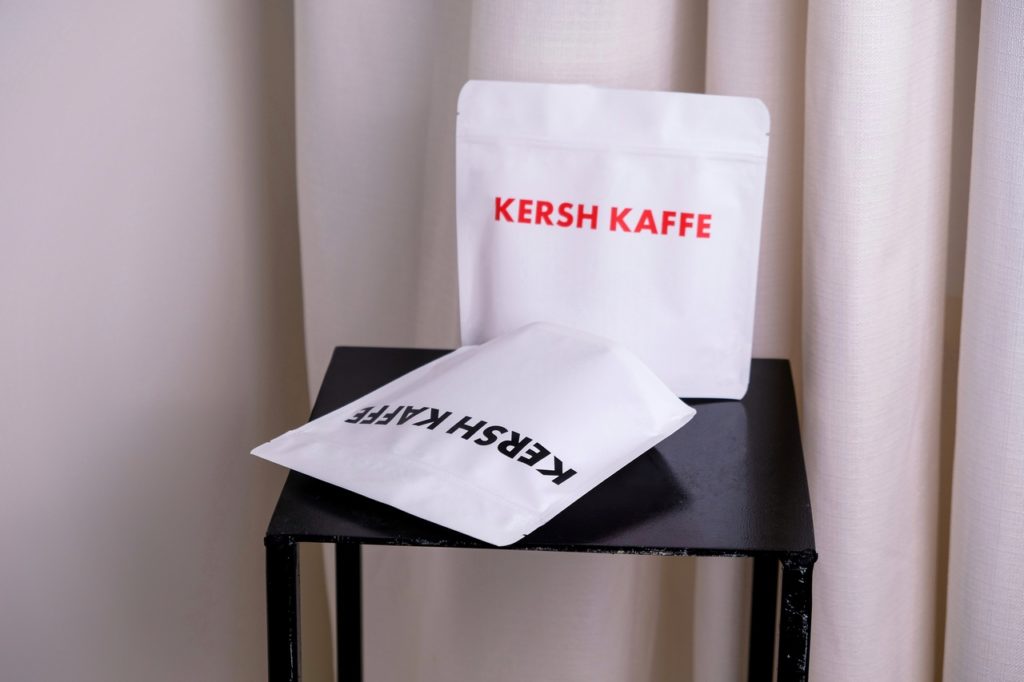
For smaller coffee shops and limited editions we offer silk-screen printing and / or foil stamping. These technologies are used for small batches (from 2000 pcs.) of stock packages from our online store.
How to order: fast and easy
We create tailor made coffee bag projects and also offer ready-made packages.
A customized project provides more opportunities to influence the materials, shapes and designs of the finished product. It is reasonable for large lots of packages, which require at least 500 kilograms of material. Since these packages are developed from scratch, it takes about 40 working days to create them.
Stock packages enable to minimize the order delivery time. Bags can be selected out of the product range on sale online and buy them in smaller volumes, starting with 500 pcs.
At Aris Pack, we specialize in high-quality packaging for coffee tailored to the needs of coffee roasters and distributors. Our range includes innovative coffee package designs that not only enhance the appearance of your products but also ensure optimal freshness. We provide premium packaging for coffee beans and durable coffee beans packaging that preserve the aroma and flavor of your product. From stylish and functional bag coffee packaging to customized solutions, Aris Pack delivers packaging that stands out and meets your brand’s specific requirements. Trust Aris Pack for reliable, eco-friendly, and visually appealing packaging solutions.
